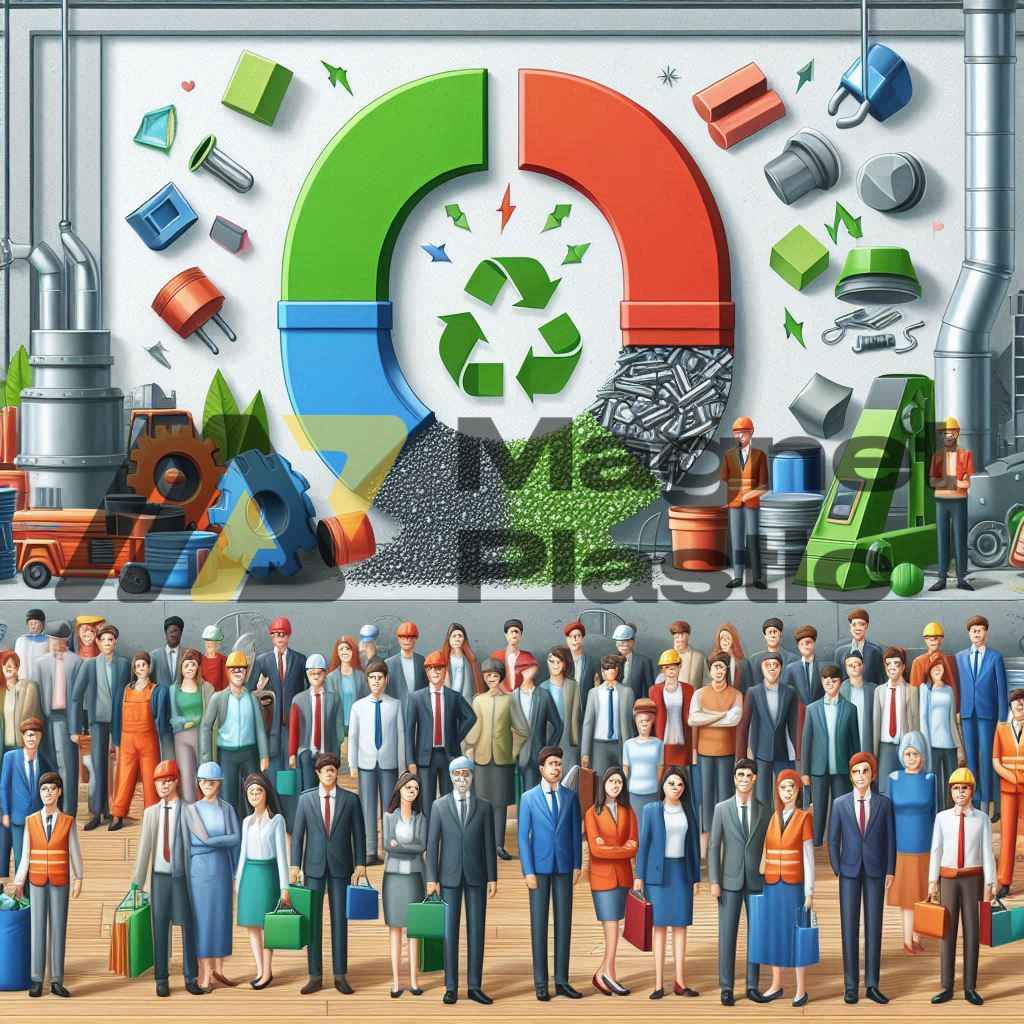Magnetic Separation and the Circular Economy
A New Approach to Waste Management
In recent years, a new approach to waste policy has emerged: the circular economy. This economic and social model aims to reduce raw material consumption, reuse resources, recycle waste, transform residues into secondary raw materials, minimize landfill use, and lower energy and water consumption.
The Role of Magnetic Separation
Within this framework, magnetic separation plays a crucial role in recycling processes by removing ferromagnetic contaminants from waste materials. This results in cleaner, purer recycled material, protects machinery from damage, and improves overall efficiency.
Applications Across Multiple Industries
Magnetic separation is used in a wide range of industries: recycling facilities, plastic, glass, and paper industries, as well as food processing and even mining. It’s also applied in wastewater treatment, separating solids from liquids, or in tire recycling, where metal components are extracted after shredding using magnets.
Environmental and Economic Benefits
These advantages not only optimize processes but also support the recovery of materials while reducing the need for virgin resources. Technological innovation has enabled the development of more powerful and adaptable magnetic systems for different types of materials.
Advances in Magnetic Technology
Significant advancements include the use of rare-earth magnets, such as neodymium, which generate extremely powerful magnetic fields that effectively capture ferrous particles even in fast or dense waste streams. Ferrite magnets, on the other hand, can repel non-ferrous materials when rotating at high speeds, enhancing separation effectiveness.
Automation and Precision
Modern magnetic separation systems are now equipped with smart sensors and software, allowing for automated and highly precise sorting. This increases material recovery rates, enhances operational efficiency, and reduces environmental impact.
Improving Recycled Material Quality
One major benefit is the production of higher-quality recycled materials, which are easier to sell or reuse. Additionally, the extracted metallic waste can be sold as scrap, creating a secondary revenue stream.
Non-Ferrous Metal Separation
For non-ferrous metals like aluminum and copper, eddy current separation is used. This technique repels non-magnetic metals, separating them efficiently for further processing.
Easy Installation and Low Maintenance
Magnetic separation systems are easy to install, cost-effective, and require little maintenance. They have long service lives and reduce equipment downtime and breakdowns, improving overall productivity.
Success Stories and Future Perspectives
Many European companies have successfully implemented magnetic separation systems, boosting the recovery of both ferrous and non-ferrous metals. In electronic recycling, advanced magnetic technologies are being used to recover valuable metals, proving the effectiveness of this technique.
Conclusion
In conclusion, magnetic separation is a key technology in supporting the circular economy. It enhances waste valorization, reduces raw material consumption, and promotes more sustainable industrial practices. As technologies continue to evolve, magnetic separation will remain a vital component of efficient and responsible recycling processes.
